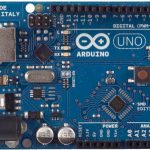With growing SoC size, complexity, software and hardware content in it and shrinking time-to-market, the SoC design completion in time has become increasingly dependent on IP which need to be sourced (internally or externally), customized according to the design need and integrated together into the SoC. While IP providers… Read More
Last VIP News of 2014
It’s likely that most of the current Semiwiki readers didn’t read this article posted in 2011, comparing Cadence and Synopsys with the Soviet Union and the USA, sharing the world in 1944 during the Yalta Conference. I was explaining in my post that Synopsys’s strong influence was on Design IP when Cadence’s preferred domain was … Read More
Is Your Washing Machine a Connected Thing?
In fact the question could be about your watch, thermostat or other smart appliance, as soon as the “thing” relies on one or more sensors to function. In this case, we are close to call this thing an IoT (or SmarCoT), we just need to add WiFi, BTLE, ZigBee connectivity. Sensors are ubiquitous, integrated into smartphone, automotive,… Read More
Semiconductor IP Make the World Go Round!
Semiconductor IP really does make the life of a semiconductor professional much easier which is why Google brings us so much IP traffic. If you look at the SemiWiki analytics, IP has always been a top draw. In comparison to standard EDA traffic, IP gets about 25% more views per blog on average. Synopsys is not only the leading EDA company… Read More
Are you SmarCoT or IoT?
No need to explain the IoT acronym (Internet of Things) except that IoT doesn’t really describe a reality: do you really know about any “Thing” being directly connected to the Internet? In fact, there is probably some intermediate system linking this thing with the Cloud, like a smartphone, an Internet box, a PC, etc. Just take a … Read More
IP-SoC 2014 Top Class Presentations…
… were given to an ever shrinking audience. This is IP-SoC paradox: audience has enjoyed very good presentations made by Cadence, Synopsys or ST-Microelectronic, to name just a few. As far as I am concerned, I was happy to present the “Interface IP Winners and Losers (Protocols)” in the amphitheater during the first day, enjoying… Read More
What Presentations to Attend During IP-SoC 2014 ?
Will you go to Grenoble next week to attend to IP-SoC? I will do it and will certainly listen to these Keynote Talks:
- “Platform IP: the next wave for SOCs from IoT to Datacenter” by Tony King-Smith, Executive Vice President, Marketing , Imagination Technologies
- “From Server-class to IoT SoCs: Enabling System
Who Really Needs USB 3.1?
USB is certainly the most ubiquitous of the Interface protocols. I would bet that everybody is using USB everyday (I mean activate a USB connection, as we also use PCIe or SATA even if we don’t realize that we do it), but which application will get benefit of the 10 Gbps delivered by USB 3.1? Before precisely answering the question, … Read More
Linux and the ARC of the Coherent
Remember that thing called “real-time Linux”? Yeah, nobody else does either. As builds became configurable and clock speeds increased, embedded Linux manifested itself as fast enough for many applications – if a few other SoC details are addressed.
Most obvious for SoCs to run Linux is the need for a fully integrated MMU implementation.… Read More
Maker Movement Embraced by Major Semiconductor Companies
In 2005 with the development of the Arduino, everything changed for people building things that required a microcontroller. The Arduino brought with it a low price standard, and open, hardware platform and an easy to use open source development environment. It was … Read More











